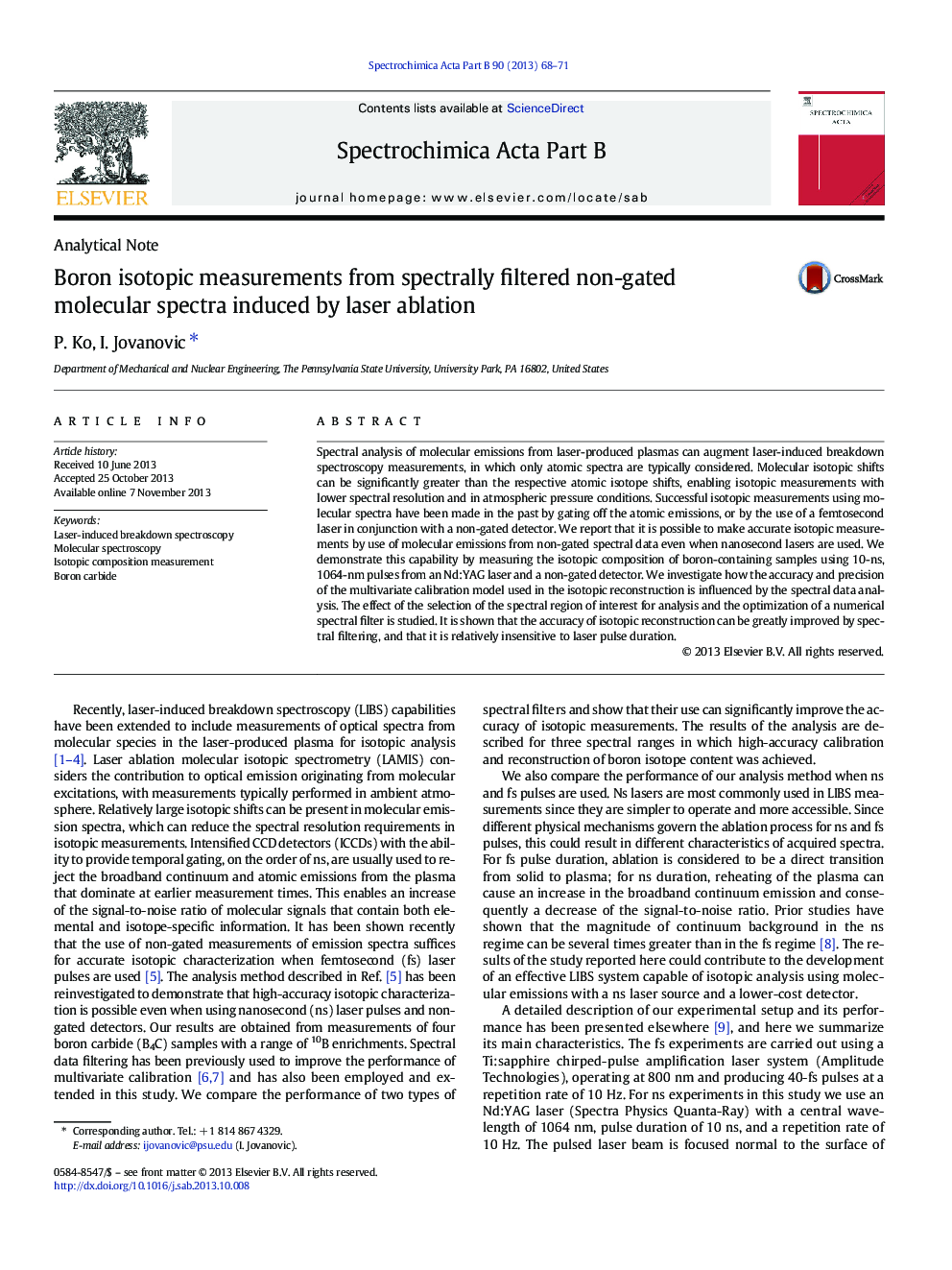| Article ID | Journal | Published Year | Pages | File Type |
|---|---|---|---|---|
| 1239787 | Spectrochimica Acta Part B: Atomic Spectroscopy | 2013 | 4 Pages |
•Boron isotopic abundance is measured with ns laser pulses and a non-gated detector.•The accuracy of multivariate calibration can be improved by spectral filtering.•Application of the method is successfully demonstrated in three spectral regions.•The accuracy of this method is relatively insensitive to laser pulse duration.•Simple, inexpensive LIBS instruments could be used to measure isotopic composition.
Spectral analysis of molecular emissions from laser-produced plasmas can augment laser-induced breakdown spectroscopy measurements, in which only atomic spectra are typically considered. Molecular isotopic shifts can be significantly greater than the respective atomic isotope shifts, enabling isotopic measurements with lower spectral resolution and in atmospheric pressure conditions. Successful isotopic measurements using molecular spectra have been made in the past by gating off the atomic emissions, or by the use of a femtosecond laser in conjunction with a non-gated detector. We report that it is possible to make accurate isotopic measurements by use of molecular emissions from non-gated spectral data even when nanosecond lasers are used. We demonstrate this capability by measuring the isotopic composition of boron-containing samples using 10-ns, 1064-nm pulses from an Nd:YAG laser and a non-gated detector. We investigate how the accuracy and precision of the multivariate calibration model used in the isotopic reconstruction is influenced by the spectral data analysis. The effect of the selection of the spectral region of interest for analysis and the optimization of a numerical spectral filter is studied. It is shown that the accuracy of isotopic reconstruction can be greatly improved by spectral filtering, and that it is relatively insensitive to laser pulse duration.
